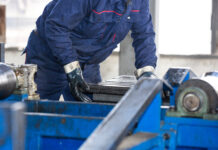NASHVILLE — With the recent start of the new school semester, nontraditional “learning pods” such as local businesses, houses of worship, homes or other structures may be used as classroom space in order to improve social distancing and reduce the spread of the COVID-19 virus across Tennessee.
In most cases, these nontraditional settings are notsubject to traditional school or childcare building safety requirements.
To aid parents, caregivers and others who may be utilizing nontraditional learning spaces, the Tennessee Department of Commerce & Insurance (TDCI) and the Tennessee State Fire Marshal’s Office are launching the “Fire Aware” consumer safety campaign to focus on reducing the risk of fire while learning in a nontraditional classroom space.
“The key to fire prevention is awareness, education and taking proactive steps today in order to prevent a fire from occurring tomorrow,” said TDCI Commissioner and State Fire Marshal Hodgen Mainda. “The Fire Aware campaign is an important resource for Tennesseans who might be using a home, business or other space as a classroom during this unprecedented time. I urge Tennesseans to be fire aware while practicing social distancing and wearing a mask to slow the spread of COVID-19.”
“For nearly 70 years, the work of fire inspectors, school officials and educators have ensured no fire fatality has occurred in a Tennessee school,” said TDCI Assistant Commissioner Gary Farley. “The State Fire Marshal’s Office wants to reduce fire risk for Tennessee students who may be attending class in their school, remotely at home or in a learning pod at a nontraditional learning site this school year. The Fire Aware campaign empowers everyone to focus on fire safety in order to help protect Tennessee’s future.”
As part of the Fire Aware program, parents, educators and others should familiarize themselves with these questions and helpful fire safety tips, including:
Does the space have an emergency fire escape plan? Will fire drills be conducted?
• Schools are required to have emergency plans for fires, storms and earthquakes to help teachers, students and administrators respond to emergencies so it’s a good idea to have them for your building, too. If you don’t already have an emergency plan, now may be a good time to develop one. Safety plans help keep everyone in your building safer when an emergency occurs.
• Schools are required to have periodic fire drills to practice exiting the building. Because students might be in a new environment, you may want to consider conducting periodic fire drills, too.
• A fire drill should simulate how the emergency exiting notice is given, which exits to take and where to assemble outside so no one has to ask those questions when a real fire occurs. Make sure to have a designated meeting space outside far enough away from the structure.
Are the exits easy to find and access?
• One of the most important aspects of fire safety is being able to safely exit the building. Make sure exit doors can be opened easily and that they are not improperly locked. Obstructions in corridors or exit stairs are hazards for everyone – ensure there is a clear pathway to all exits.
• Locate students in the safest parts of buildings. The ground floor is the best location. Basements or areas below ground should be used for students only if there are exit doors to the outside at that level.
• Many schools have emergency access and egress windows in classrooms that allow for students to escape the room and for firefighters to more easily enter the building. If available, students should use rooms that have operable windows that are large enough to climb through in an emergency.
• The building owners should not allow combustibles such as trash, paper, cardboard and boxes of supplies to accumulate to dangerous levels, and combustibles should not be stored in corridors or stairs. If you have any concerns, contact your local codes or fire officials about conducting an inspection
• Please refrain from hanging items from the ceiling and placing too many things on the walls that could create a visual obstruction or cause a fire to burn hotter and faster.
Is a stove being used in the learning space?
• Cooking fires contribute to over 22% of fires in buildings other than restaurants in Tennessee. Whether at home or school or somewhere in between, please always remember to exercise fire safety when cooking.
• Never leave a stove or oven on and unattended. If you must leave the room, even for a short period of time, turn off the stove. Staying alert helps prevent cooking fires.
Questions about a learning pod? Contact the Tennessee State Fire Marshal’s Office team with your questions. Call George Smith at (615) 604-4195 or Chris Bainbridge at (615) 741-6246.
To download a printable “Fire Aware” checklist, click here.









